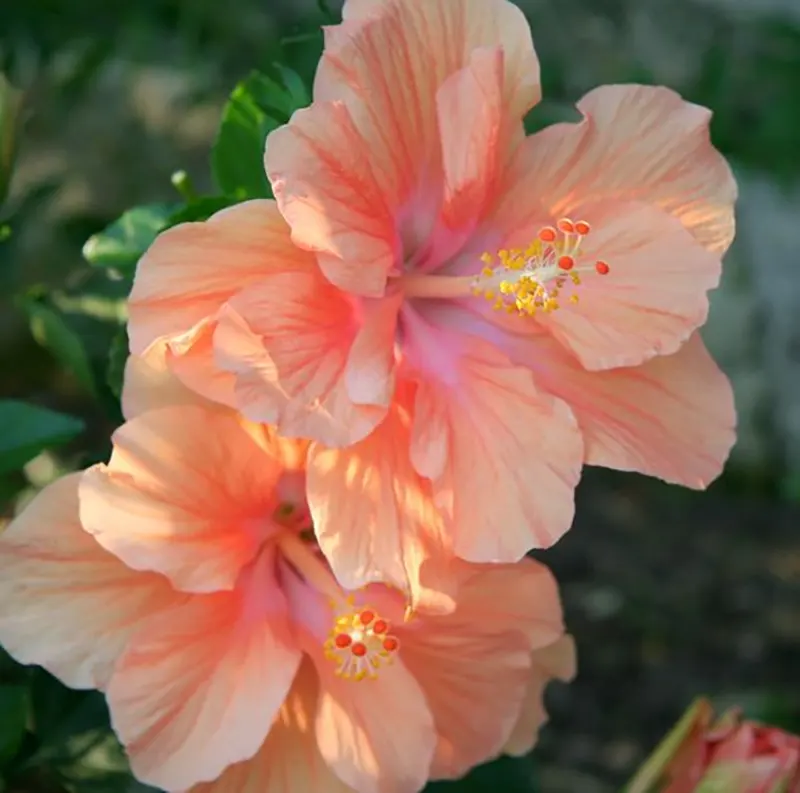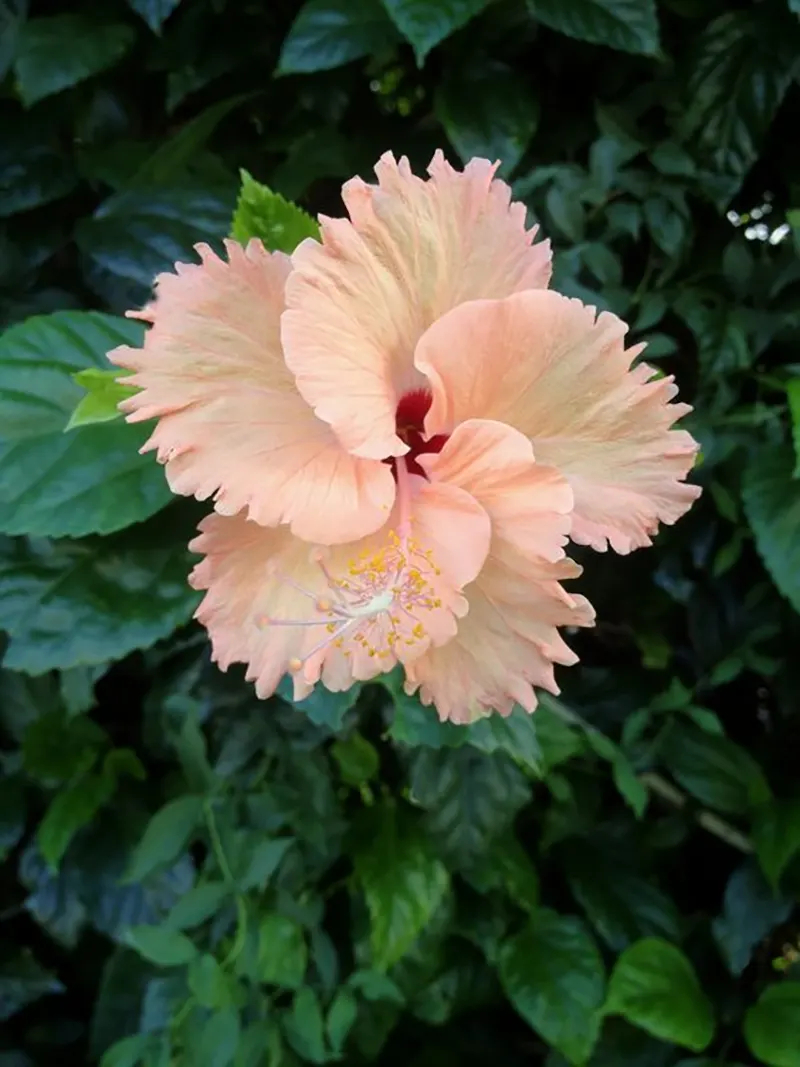What Is Bonsai Ramification and How To Do It?
We always start these guides the same way. ‘Hibiscus is one of the most beautiful and alluring plants in the entire natural kingdom.’ And while that is true, as is the fact this plant has so much good to give to the world, it’s not necessary to open every article the same way. So instead, this time, I’ll say that I was once like you, unable to propagate or care for plants. For the longest time, I subscribed to the idea that some people had green thumbs and others did not.
Since joining the Bonsai Alchemist team and leaning into horticulture and spirituality, I’ve discovered that there is no such thing as a green thumb. If you want to learn to take care of plants, you can. You have everything inside you that you need to be successful in anything you do. Perhaps all you need is the right knowledge. That is what we provide. So, stick around and absorb all knowledge you’ll need to prune hibiscus like a pro.
What is pruning?
It might strike you as odd that I’d dedicate a section to explaining what pruning is. However, I’ve realized that not everyone knows exactly what pruning is and what role it plays in your hibiscus’ overall health. Therefore, I’ve compiled this short section that tells you all of the most crucial bits about pruning.
Pruning means taking mass away from a plant by means of cutting it away. This is usually achieved with pruning shears, but a sharp knife or pair of scissors works, too if that’s all you have at hand. There are many reasons why you should prune your hibiscus plant, but the one that we default to most often is to keep a plant small and controlled. With hibiscus, this isn’t always the case, simply due to how beautiful these shrubs are when they’re allowed to grow to their full size and bear massive blooms. However, not all species of hibiscus are the same, and some are better to keep slightly smaller.
The second reason to prune your plants is to keep them growing profusely. See, your plant may be growing just fine, but as soon as you start pruning it, it should grow even better. This is part of a natural principle whereby certain organisms or aspects of an organism respond to threats by making themselves stronger. Think of your beard, if you have one, or any other hair on your body. If you want it to grow thicker and more lush, you cut it regularly. The hair is the organism, and the razor is the threat. The hair doesn’t want to be cut, but seeing as it cannot prevent you from cutting it, it responds by ensuring that its a little more difficult to cut the next time. Hence, it grows back thicker and more lush. The same thing happens with your plant.
Your hibiscus is the organism, your pruning shears are the threat. In order to try and ensure that you don’t cut it back again, your plant will grow more profusely and make itself stronger. Keep pruning, and you’ll keep encouraging your plant to grow stronger and more lush. 
When should you prune hibiscus?
Just as there is a right way to prune hibiscus, which we’ll cover in a short while, there’s also a right time to prune hibiscus. Now, we went into this in more detail in our seasonal guide for hibiscus, but for the purpose of keeping this article slightly short, I’ll only be covering the different seasons. Just in case you’re asking, temperature also plays a massive roll in when you should prune hibiscus, but this covered in the hibiscus seasonal guide.
The ideal time to prune hibiscus is right at the beginning of spring. During fall and winter, your plant will most likely lose a good deal of its leaves, will cease flowering, and may look a little sad. When spring comes around again, you want your plant to be in the best position to start growing actively again. While spring is an active growing season, and your plant should start growing again of its own volition, pruning is a way to help it along. All you’ll want to do is cut away the obviously dead and dry bits of your plant so that it can grow properly. Typically, you never take off more than a third of each stalk or branch, but sometimes it’s necessary to take off entire branches if all of its leaves are dead.
You’ll also want to take off some of the older growth so that your plant diverts more energy to producing new leaves and in the summer, blooms. You can always tell which the older sections of the plant are by the color of its leaves. Older growth is darker than young leaves, and old leaves may also be wilting slightly and look a little less alive than other parts of the plant. Remove these; they are doing nothing for your plant. You’ll also want to take off any yellowing leaves, as this is a sign that that particular part of your hibiscus isn’t getting enough nutrients.
The name of the early spring game is preparing your plant for a healthy flowering season. Everything you do here is in service to the overall health of the plant, even though picking bits and pieces off of your plant seems a bit counterintuitive at times.
Now, the beginning of spring isn’t really a fixed time, as some plants take a little longer to develop new growth. So, to know exactly when it’s the right time to prune your hibiscus plant, you’ll need to look at each plant itself. As soon as it starts producing new young leaves or shoots, it’s time to start pruning. This preparation for summer is called a hard cutback, and you should only do this before the flowering season. Performing a hard cutback during any other season could result in the death of your hibiscus plant. 
Other times to prune your hibiscus
You can prune your hibiscus at any time during an active growing season. This is because during these seasons, the plant is predisposed to growing and will recuperate any losses in mass that you create. Now, we’ve already covered one method of pruning, the hard cutback. But there are other types of pruning of which you should be aware.
Pinching – this is when you quite literally pinch off the very end of a branch. This is alway done just above a node. The nodes are little bulges on the stem of your hibiscus plant from where leaves and shoots grow. The science behind pinching is rather interesting, but also complex at the molecular level. Basically what happens is when you pinch off a central tip structure, your hibiscus plant will respond by producing two more stems where you made the pinch. These are called lateral stems, and it’s quite a joy to see this happen. Obviously over the space of a week or so; plants don’t grow fast enough for you to watch it happen.
Tip pruning – This is very similar to pinching, but while pinching is just taking off the very end leaves on a stem, tip pruning can go back up to five centimeteres from the end of the stem. Both have similar results though. Any type of pruning usually results in new growth.
Heading cut – A heading cut means to cut back a stem to a lateral branch. The stem is the central branch on any given hibiscus plant. In plants, you usually have a trunk, a stem, and a lateral branch. You know what a trunk is, but many believe that only trees have trunks. The main of the shrub growing out of the ground is also called a trunk. Trunks grow from roots, stems grow from trunks, and lateral branches grow from stems. All you need to do to make a heading cut is cut stems on your plant back to a lateral branch. This also usually results in profuse growth down the line.
To be honest, different publications and plantophiles have differing ideas of what the types of pruning are. You’ll see that some list four types, others three, and some recognize only two types of pruning methods. However, as with anything that you do yourself, your hibiscus gives you a chance to become an expert. Try out the pruning methods we’ve laid out here and see how well they work for you. You should, however, feel free to experiment with your plants and isolate the way that they like to be pruned. As mentioned before in passing, pruning sometimes depends on temperature as well. So, if you find that winters are warm enough that your plant continues to show new growth, feel free to try pinching it. You may discover something that you could teach the experts.
However, if you’re new to gardening or keeping plants like hibiscus or hibiscus bonsais, stick to the basics until you’re familiar enough with the plant to know what it needs based on how it looks. We have numerous guides on the subject, so feel free to peruse our website, or simply click on any links you find scattered around this article. While you’re at it, why not read our article about the types of hibiscus? You’ll be able to see what you’ve got and which species you might still want to bring into your garden. 
How to prune hibiscus like a pro
We’ve tried to keep this section as concise as possible, mostly because this is an incredibly easy process. However, we’ve also added little tid bits of information throughout this section, as we often do, to make sure you are armed with all the information you could need.
Season check
The first thing you need to do is make sure that you’re in a season where your hibiscus plant is still experiencing active growth. You’ll be able to tell by looking at the very ends of your plant. Are the newest leaves still light and supple? Are the lateral branches still soft and bendy? If yes, your plant is still growing.
Prepare your implements
As previously stated, you’d usually use a pair of garden shears for pruning. However, if all you have at hand is a sharp knife or a pair of scissors, that should do. As you may have surmised, sometimes pruning requires nothing more than two fingers, hence we call it pinching.
Once you’ve got your implements out, you’ll need to disinfect them. We suggest using some kind of alcohol gel. The names you’re looking for are ethanol and isopropyl. If you see these names on a bottle of stuff at the garden store, hardware outlet, or nursery, you cannot go wrong. You don’t need to soak your tools, you simply need to give them a quick but thorough wiping down. If you aren’t familiar with isopropyl or ethanol, they’re commonly what make up 70% of standard rubbing alcohol solutions, so that would be perfect. Since we’re still sort of in a Covid-19 state of sorts, it’s pertinent to mention that you can use hand sanitizer to clean your implements too.
Fun Fact: If your tools are rusted, leave them to soak in vinegar for 24 hours. Thereafter, you should be able to scrub your tools clean and have them ready for your next gardening adventure.
The reason that we prepare implements before we bring them close to our plants is to ensure that we don’t infect our plants with little critters who may be hitching a ride on the shiny metal tips. For this reason, it’s also preferable – if a little OCD – to clean your tools while moving between each plant. 
Get pruning
This is the fun bit. For a full cut-back, you’ll want to make your cuts a third of the way from the tip of each stem. Always try and cut above a node, so that new growth has a chance to develop. You should always try to leave at least two to three nodes below your cut. Otherwise, you’ll impede the voracity and speed at which new growth will happen.
We covered the other types of pruning when we listed them, so the last thing we’ll say is that while you’re pruning, it’s a good idea to remove any leggy branches. Leggy basically just means that the branch has little to no leaf production, and therefore doesn’t serve a purpose. If you can see new buds or little leaves starting to grow, leave the branch alone. It’s also good practice to remove any branches that grow toward the middle of the plant. These won’t really have a purpose either as the sun most likely won’t reach them.
That’s all folks
Anyone can be a master in the garden. All you need is the right information and a the right tools. Once you have those two bases covered, you’ll be well on your way to a successful gardening adventure.







